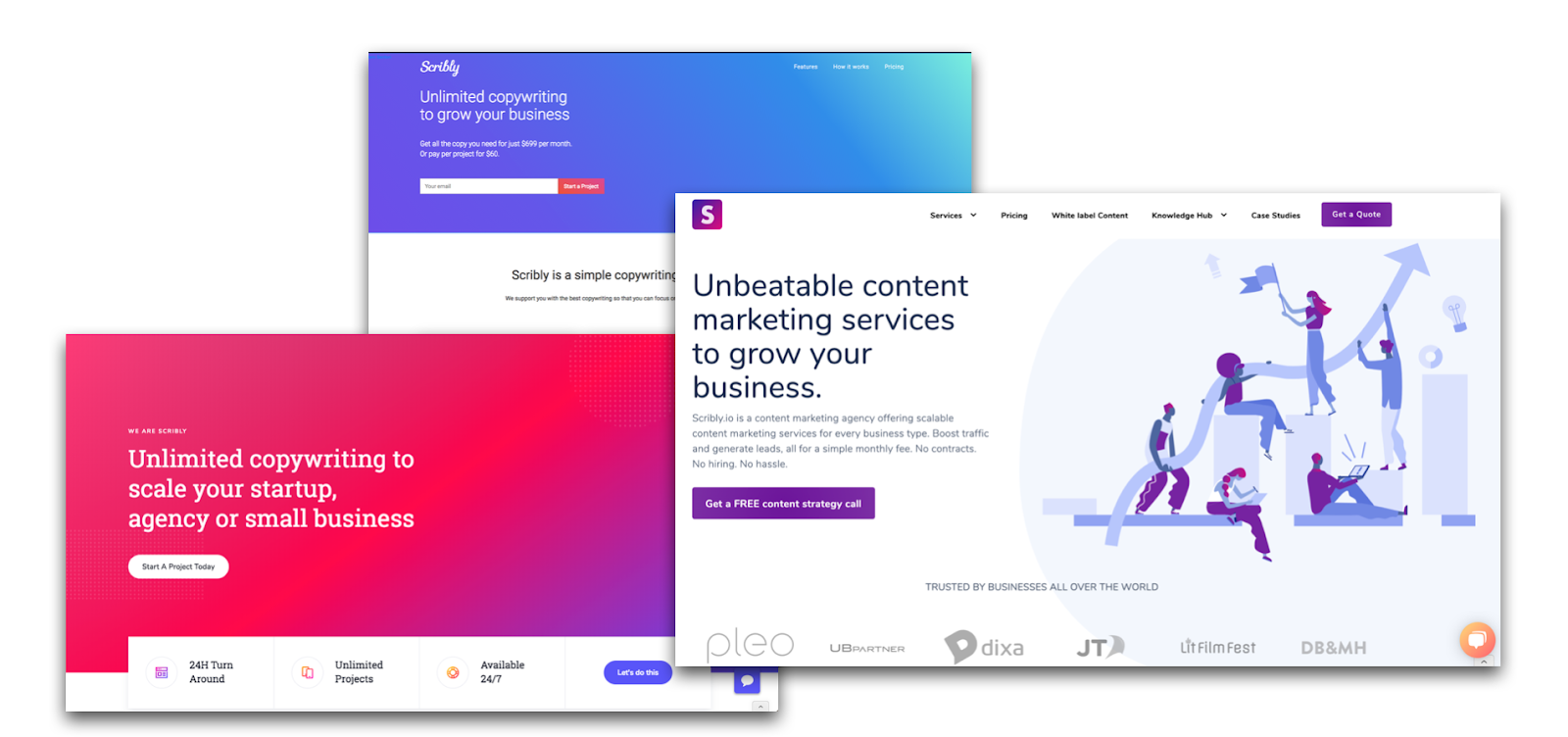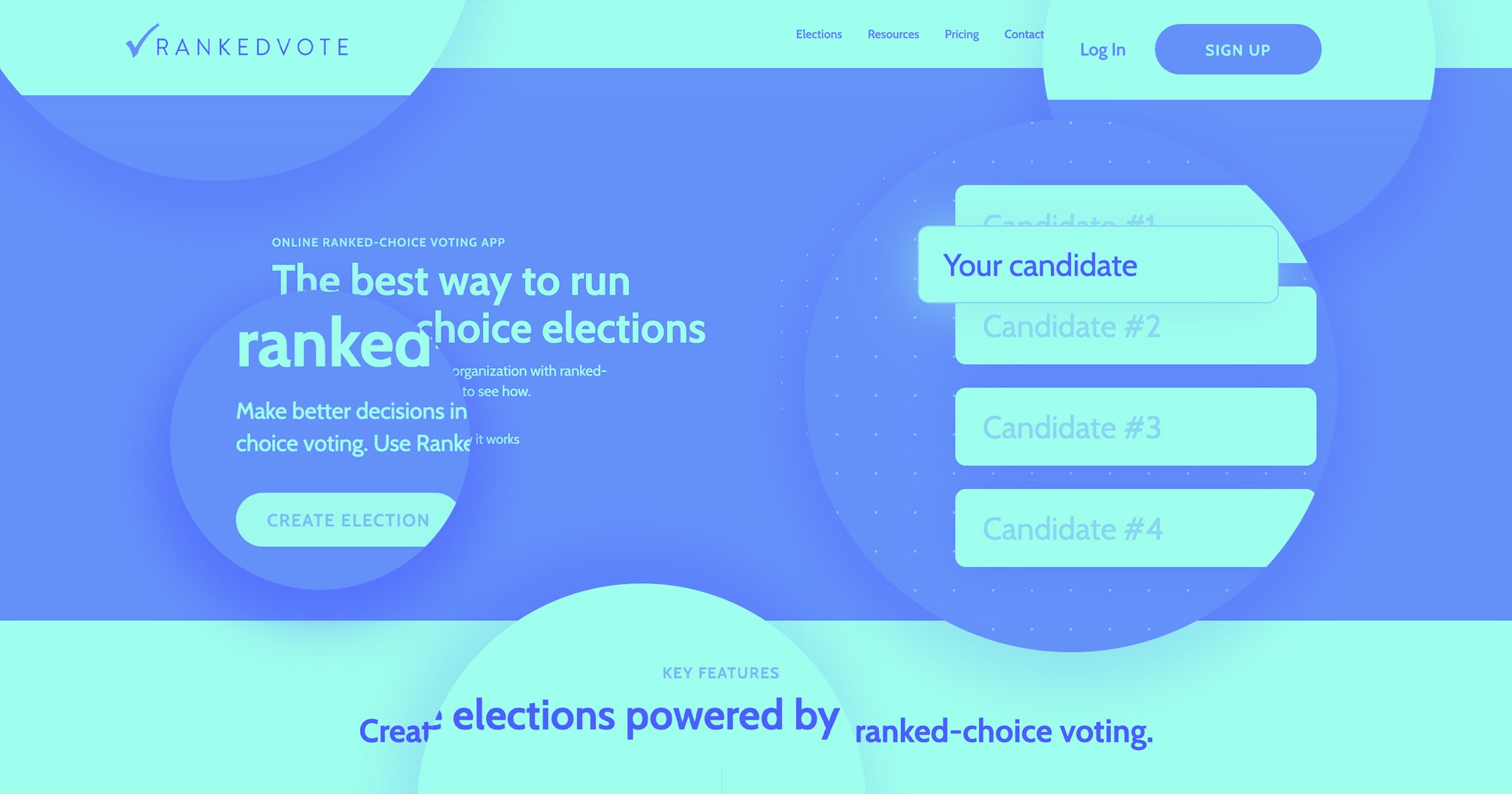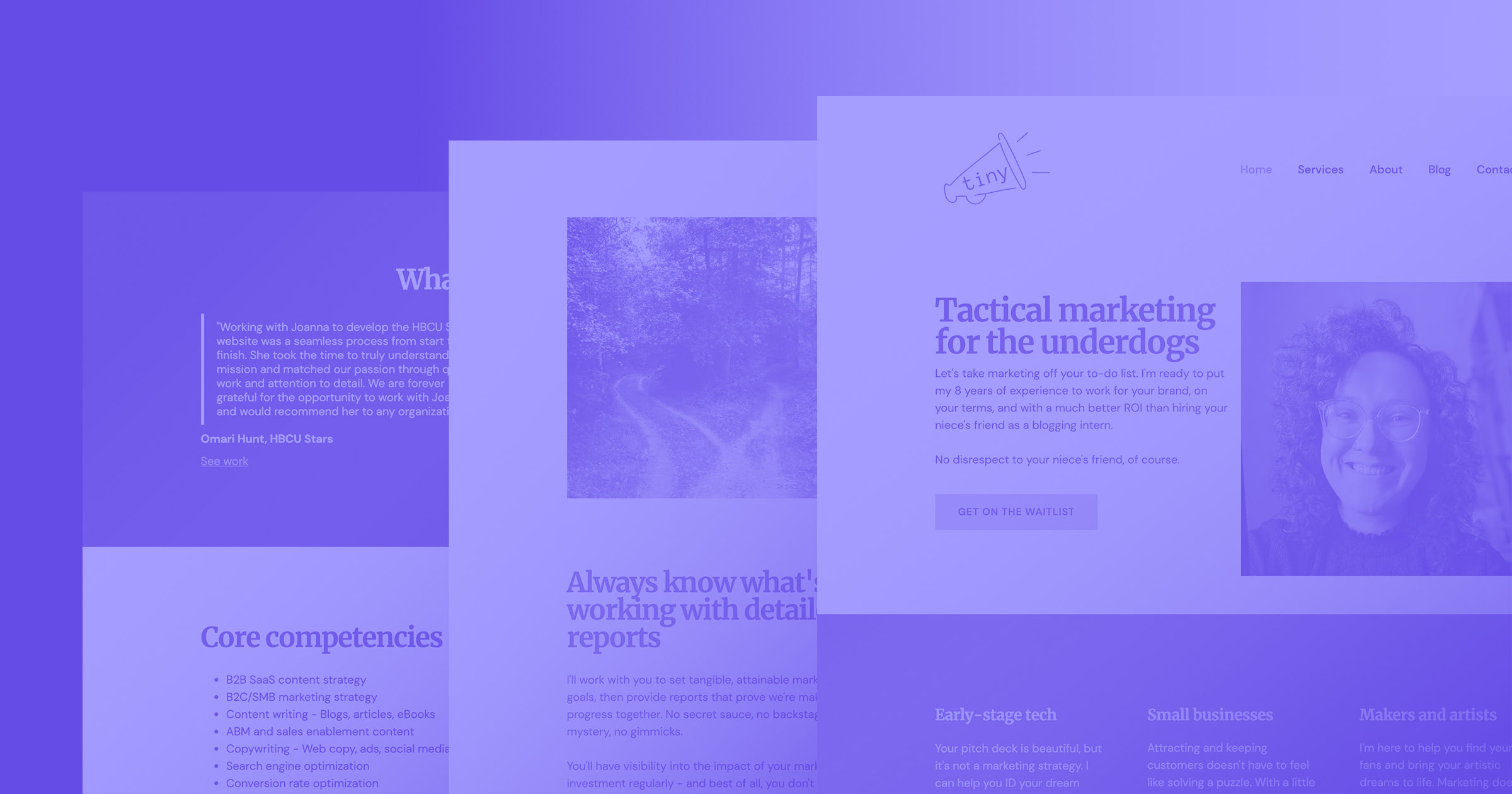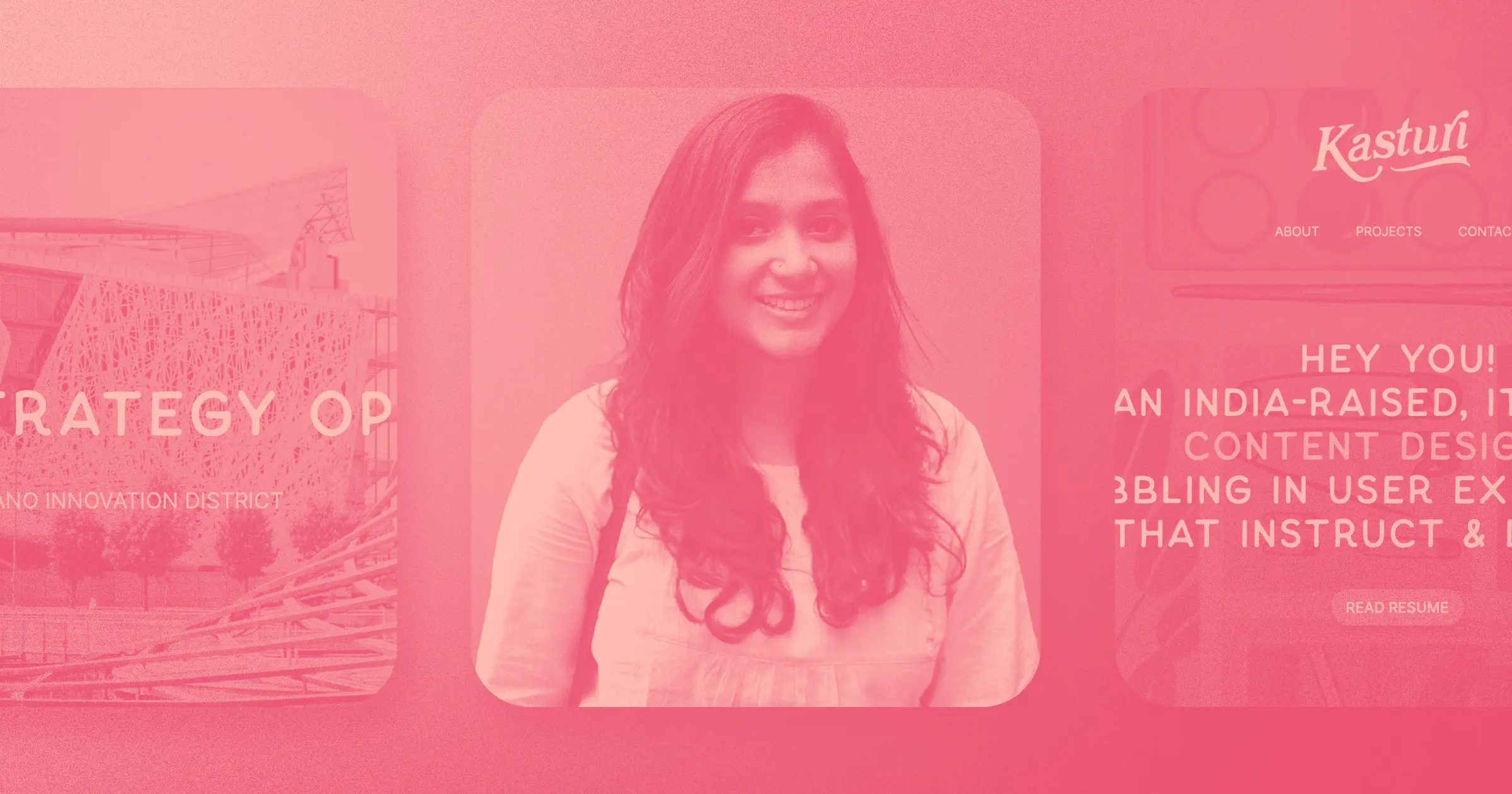A few weeks ago, I was lucky enough to take part in the Webflow Virtual World Tour. My talk centered around how Webflow (and the wider no code movement) enabled me — a (totally) non-technical, first-time founder with zero entrepreneurial experience — to build a profitable business in one weekend.
This was not a talk about my business per se, but rather an attempt to provide some nuggets of wisdom to other inexperienced founders with big ideas to show that if I can do it, they can too.
Fast forward a few weeks, and I’m lucky enough to be able to share that story with you, too.
Prefer to watch?
We've got you.
Anyone can be an entrepreneur — even me
I don’t know about you, but for most of my life I assumed there was a type of person who could make it as an entrepreneur.
The trope went something like this: white guy, bit scruffy, American, hyper-confident, deeply immersed in the world of tech.
Aka: nothing at all resembling me.
How I went from burned out to ballin’
My career to date has been a total jungle gym. I did a degree in French and Russian, started working in policy development for the UK government, then retrained as a UX designer, and then again as a copywriter.
I was all over the place, constantly flitting from one thing to the next but never ever finding the right fit.
Dissatisfaction, restlessness, and frustration were constant fixtures of the first 10 years of my career.
I remember sitting at my desk one day and thinking, “This surely can’t be it for the next 60 years ... ”
Deep down, I always wanted to start a business, but it didn’t seem like something that people like me do. I could list a thousand assumptions I had about why, but they boiled down to the following:
- I’m not a hu$tlr
- I’m afraid of risk
- I had nothing to invest
- I am a total technical n00b
- I had zero experience running a business — what did it take?!
- I couldn’t see any role models like me
Starting my business seemed about as probable as becoming an astronaut. In fact, I didn’t even consider it as an option.
But the problem is, as the years rolled by, the alternative absolutely sucked.
So much so that one day, I literally just decided to quit my job and start working as a freelance writer. Which was actually quite a ballsy move in hindsight, as I only had income from one client at the time.
Fast forward a few months, and life started to feel on track again. I was earning a modest living doing something I loved, and I was doing it on my terms. But I kept coming back to this nagging feeling that there must be some way of adapting my freelance lifestyle into something more scalable. There had to be a way of turning it into a business. That feeling was getting stronger by the week as I’d begun to notice a pattern with all my freelance clients.
As much as it pained my ego, they didn’t necessarily want me — they wanted a reliable, affordable, scalable content partner. They wanted a plug and play solution: monthly content that drove results, without needing involvement from them.
They wanted a productized version of me.
This realization was how the early version of Scribly was born.
The idea was solid, but I had absolutely no clue how to transform that idea into anything resembling a business.
Enter Webflow
As I was battling with these ideas and trying to figure out (overly complicated) ways of bringing them to life, my husband casually strolled in one evening and said, “Oh, but you probably can test this out using Webflow.”
... Web-what-now?
That was the first time I’d ever heard of Webflow, but as soon as I checked it out, I knew I’d found exactly what I needed to at least get a prototype off the ground. Over the next 48 hours I got to work doing just that.
- Buy a template
- Write web copy
- Hook up some kind of payment solution (Stripe!)
- Automate as much of the back end as possible (Airtable and Zapier!)
- Total cost = $90
- Total time = 2 days
With the initial setup complete, all that was left was to put my embryonic business idea out into the world and see what happened. Over the next seven days, I did a soft launch by contacting freelance clients and announcing online to various founder communities.
By the end of the following week, I generated over $2K in sales — my new life as a founder was born.
A Webflow business starter kit
Here’s the simple framework I used to launch Scribly:
1. Describe your business in three sentences or less:
- Which problem(s) are you solving?
- Who are you solving it for?
- What makes you different ?
2. Buy a template for a landing page and spend two hours writing the copy
3. Launch and learn
Sounds like a ludicrously simple plan, right?
That’s because it is. But it works (promise).
Since starting Scribly, I’ve learned that the simplest, most intuitive plan is almost always the best one. You don’t need to read up on fancy protocols of how other, more experienced people are doing things. You need to follow your gut instinct about what makes sense with the tools you have at your disposal, right now, and do it your way.
For so long, I got stuck with analysis paralysis and a crippling case of imposter syndrome, always thinking that if only I was more experienced I’d be able to turn my ideas into a business. It was only when I decided to follow the simplest path to try something out that I managed to get anywhere at all.



















Get started for free
Create custom, scalable websites — without writing code. Start building in Webflow.
Turning your side project into a business: 4 key lessons I’ve learned
Of course, those simple ideas will grow in complexity as you become more established. That’s all part of the process. What matters most is that you do something to just get started.
I made tons of mistakes and took lots of wrong turns over the past few years. Here’s a rundown of the key lessons I’ve learned along the way:
1. Sell the right thing
For the first year, I positioned Scribly as an unlimited copywriting service. I thought the unlimited angle was my hook, but I slowly realized that it was actually a feature. Unlimited copywriting wasn’t what people actually wanted.
My customers wanted organic marketing to drive sales. So I shifted Scribly’s focus away from unlimited copywriting and created flexible content marketing packages.
Be ready to shift your model and offer based on customer feedback and your sales patterns. That may sound obvious, but it took me over a year to figure it out.
2. Create clear SOPs
When you’re running your productized service solo, it’s tempting to keep everything inside your head — after all, you’re the only one running things. But I cannot overstate the importance of creating a business that you can easily bring new team members into.
As Scribly has grown, I’ve documented every single process, from sales to project management. I use Notion, but Paper, Slite, or even Google Docs are helpful tools for documenting everything a new team member needs to know. Here’s a talk I recently gave on how I’ve gone about this process.
It doesn’t have to be too detailed, but it’s essential that your team has a single company wiki that they can turn to in order to do their jobs well. Try to hire or grow without this, and you’ll fail.
3. Don’t be cheap
When I launched Scribly, I massively underpriced our products. I didn’t know how to price our services, so I looked at my current freelance rate, compared it to what other copywriters offered online, and then priced Scribly at the lower end of that range.
I was insecure. I thought that the only way I would sell anything was by being cheaper than my competitors. But now I’ve made a strategic decision to charge a lot more than other copywriting services — with the promise that my customers will get top-notch content for their investment.
You’ll struggle to get off the ground if you sell your product or service short. Being the cheapest on the market is not what counts. Being the best (within your price range) is.
4. Resist the urge to overtool
Overtooling is an easy trap to fall into, which is why choosing your toolstack is such a key decision. When I started Scribly, I mistakenly thought that I needed to find a tool for everything — I went a bit overboard. Recently, I’ve reevaluated Scribly’s toolstack and cut it down to the bare minimum that we need to scale reliably and efficiently.
As you develop your toolstack, ask yourself:
- Does this tool add value or is it creating confusion?
- Does this tool fit into our existing workflows? If it doesn’t, how can we smoothly integrate it?
- Does the tool’s cost justify its output?
Remember: you’re on a journey, so just launch and learn
The Scribly I launched back in 2018 is a million miles away from where we are today. The value proposition was different, the brand was different, and the tech setup was different.
Despite that, it was everything I needed to get my business off the ground.
So, even though you definitely can launch a business with Webflow in a weekend, remember that it’s just the beginning of a much bigger journey. Don’t be afraid to make mistakes!

Most importantly, here’s what entrepreneurs really look like
If there’s one thing I’ve learned over the course of this process, it’s that the old startup stereotype is dead.
I started to realize that — thanks to the no code movement — totally new types of entrepreneurs were out there. The scene was changing. Now there was room for everyone.
In fact, since discovering Webflow and starting Scribly.io, I've met women, people of color, nontechnical founders, and more who didn't fit the entrepreneurial mold before solutions like Webflow were available. No code solutions have been transformative for me: I've gained confidence and strength to do things my own way from this community.































